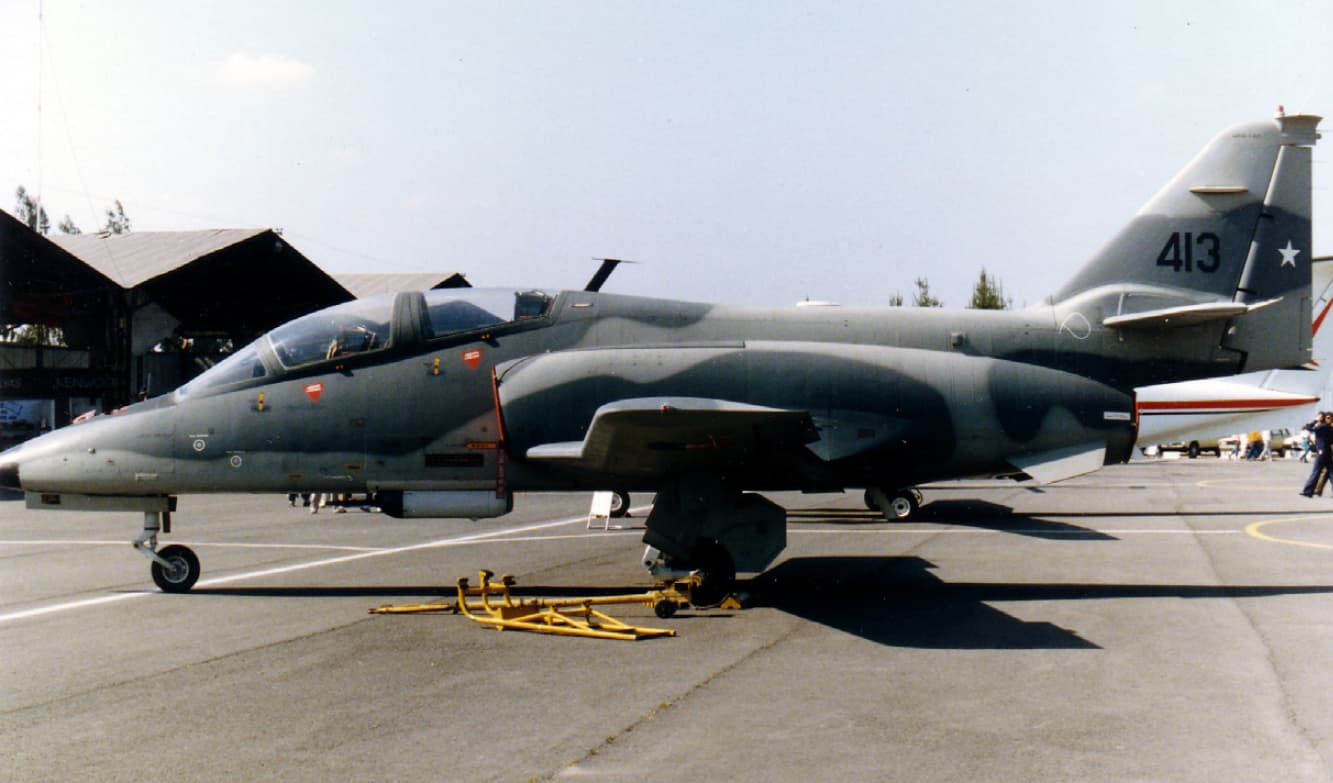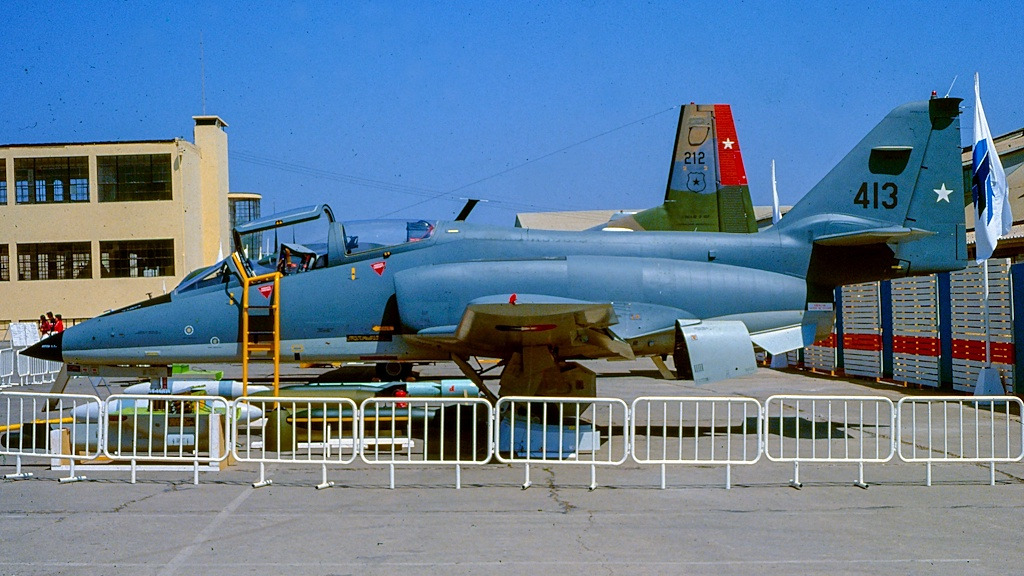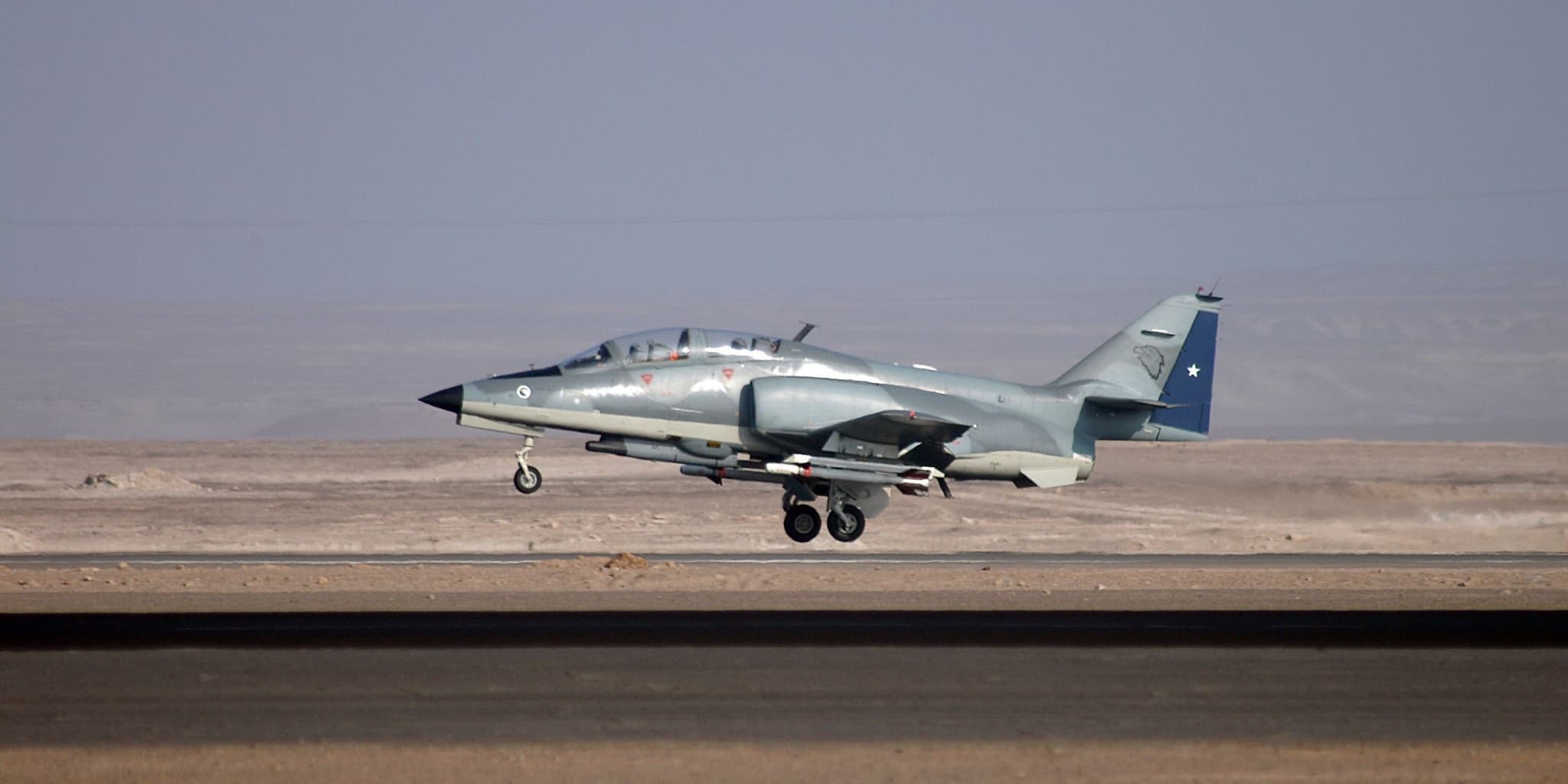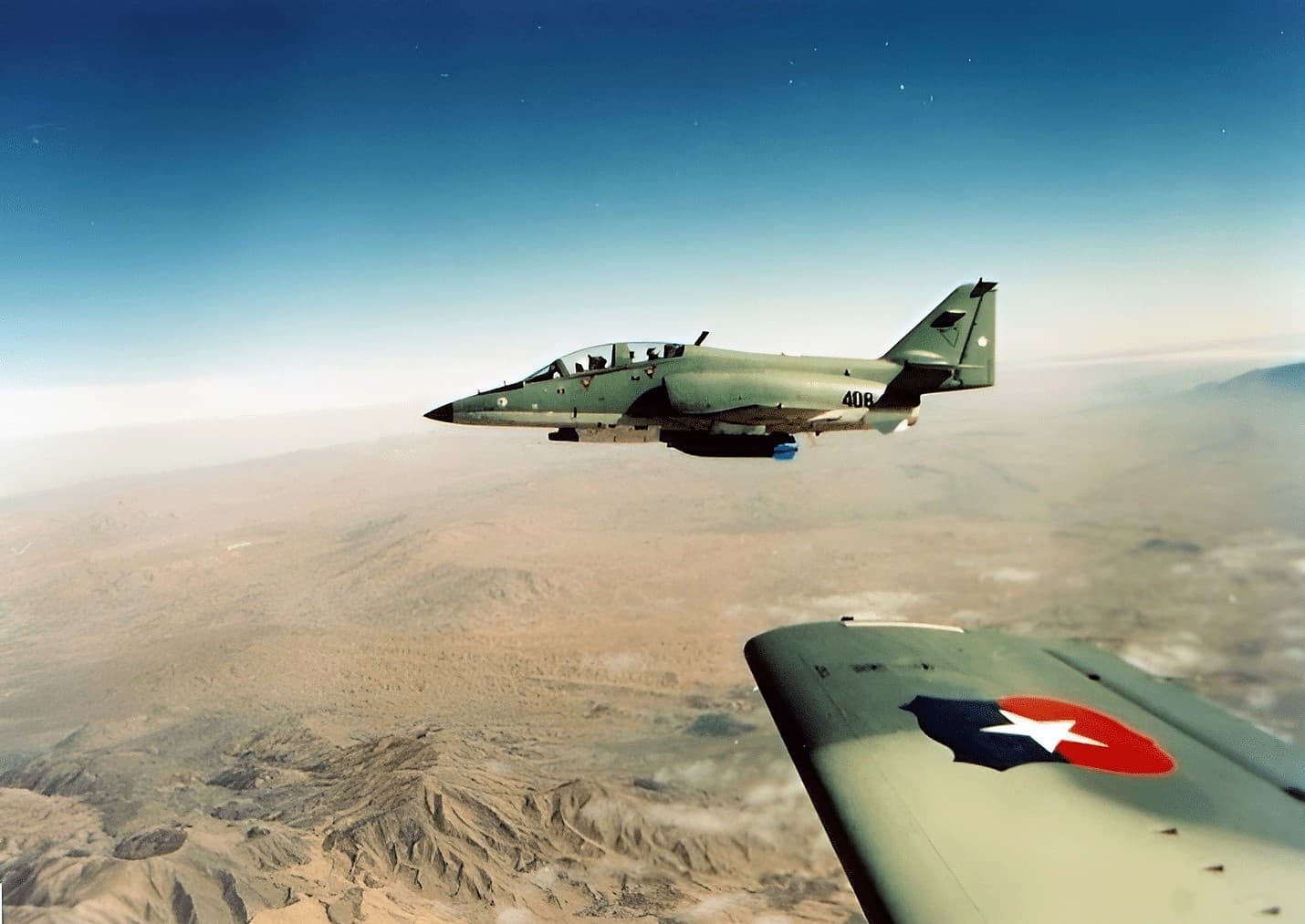- Yes
- No
ENAER A-36 Toquí
History:
In 1980 an agreement was reached with CASA of Spain where Chile ordered the purchase of 16 C-101BB of which 4 were assembled in Spain and the rest at ENAER in Chile. The first example assembled in Chile was delivered in 1981 and was named T-36BB Halcón by the Chilean Air Force. The C-101BB Halcón version was assembled in Chile, which had a more powerful engine with 3,700 pounds of thrust.

Subsequently, the Chilean Air Force requested CASA for an improved version of the aircraft, which resulted in the C-101CC with a new Garrett TFE731-5-1J engine with 4,300 pounds of thrust that increased the maximum speed to 830 km/h and the engine can reach 4,700 pounds of thrust in combat mode, a pod with a 30 mm DEFA 553 cannon was also installed in the belly of the plane. The first prototype flew in 1983 and in 1984 the FACH ordered the purchase of the second aircraft now named by CASA as C-101CC-02 and A-36 Halcón by the FACH, 22 more of these aircraft were purchased and produced locally in Chile. In 1986 ENAER delivered the first of these aircraft.
Both the T-36 and A-36 were delivered to the FACH with UHF communications equipment Magnavox AN/ARC-164, VHF Collins 21B, VOR ILS Collins VIR-3IA, Collins DME-40, Collins ADF-60, Andrea intercoms AN/AIC-18, IFF/SIF Teledyne/CASA AN/APX-IOI, Sperry ZC-222 flight director, Sperry AS-339 horizon, ADI-500C, RD-550A HSI and Avimo RGS2 sight on both posts and system CASA SCAR-81 weapons control, and received a pointed nose to install a firing radar.
During 1986, the British Aerospace Sea Eagle anti-ship missiles were also tested, but due to the lack of an adequate radar, interest in this project was lost and it was finally abandoned, also, the Navy received six Eurocopter Cougar helicopters capable of launching Exocet missiles, so to avoid duplication of capabilities, only missiles were used on the helicopters.
It’s important to mention that the Sea Eagle missile itself had its own seeker radar, so it didn’t need the aircraft’s radar for launch. The first half of its journey was guided by inertial navigation, and the second half by the seeker radar, which included a reprogrammable digital computer and a radar altimeter. After launch, the missile descended to sea level and self-guided its flight path to the target. Following successful tests of this missile on the A-36 Halcón, it was ultimately decided not to adopt it because the aircraft lacked a seeker radar capable of detecting enemy naval targets. Therefore, the pilot would have had to visually identify the targets, which would be difficult. However, as explained earlier in the missile’s characteristics, this missile doesn’t require an aircraft-mounted radar because it is self-guided.
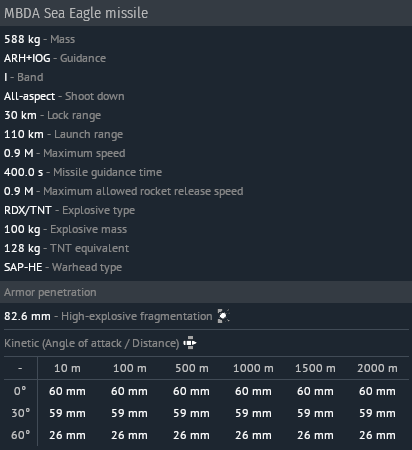
For those years the A-36 Halcón could carry various weapons in its 6 underwing stations, bombs of all types and sizes, rockets and the aforementioned 30 mm cannon pod. Pods with 12.7 mm machine guns were also received to be used on the A-36, although they were not widely used and it was preferred to continue using the 30 mm ones.
In 1996 in Chile, the new modernization of the A-36 Halcón began, with the implementation of HOTAS for the pilot, integration of a navigation system and attack system SAGEM UTR-90 and SAGEM ULISS-92 (the same ones used by Chile’s Mirage Elkan), the adoption of the Ferranti brand HUD for the presentation of data in the Head-Up Display, a Toqui telemetric radar of national design and other systems, in addition to the ability to launch Rafael Shafrir II air-to-air missiles. The cost of the modernization was 1 million dollars per plane. The integration of the national Toquí radar was what would give the new name to this improved version in Chile, finally becoming called A-36 Toquí, although it is also called A-36 Halcón II. The new version was officially presented at the ENAER facilities on November 26, 1997.

Finally, all A-36 Toquí were withdrawn from service in 2022 after several years of service, and were replaced by the Brazilian A-29B Super Tucano.
Trailer of the A-36 Toquí in DCS, you can see the cockpit well
Specifications:
- Crew:
- 2
- Armament:
- Primary: 1x DEFA 553 30 mm cannon and 130 shots or 2x 12.7mm M3 Browning machine guns with 220 rounds
- Secondary: Warload - 2250 kg in 6 hardpoints:
- Bombs: Mk.81 bombs, Mk.82 bombs, SAMP 250 kg bombs, CB-250-K/CB-500-K cluster bombs, Mk.81/Mk.82 Snakeye bombs, CFB 27600 anti-personnel bomb, ALAMANT 100-gallon (378 kg) napalm tanks
- Rockets: LAU-10 with 4 Zuni rockets, LAU-68/A with 7 FFAR mighty mouse rockets, LAU-3/A with 19 FFAR mighty mouse rockets
- Missiles: 2x Shafrir II, 2x Anti-ship missile Sea Eagle.
- Additional systems: HOTAS, Navigation system and another attack system brand SAGEM, HUD of the Ferranti brand, Toqui telemetric radar.
- Dimensions:
- Length: 12.50 m
- Wingspan: 10.6 m
- Height: 4.25 m
- Wings area: 20.00 m²
- Weight empty: 3500 kg
- Weight normal take-off: 5000 kg
- Weight maximum take-off: 6300 kg
- Weight Internal fuel: 1822 kg
- Performance:
- Powerplant: 1x TJE Garrett TFE731-5-1J, 4,300 pound-thrust (1951 kgf), 4,700 pound-thrust combat mode (2132 kgf)
- Maximum speed: in altitude 834 km/h, on sea level 769 km/h
- Cruising speed: 656 km/h
- Range: 3706 km
- Combat radius: 370-964 km
- Rate of climb: 24.9 m/s normal mode, 31.15 m/s combat mode
- Service ceiling: 12800 m
- Maximum overload: -3.9 to +7.5
Photos:
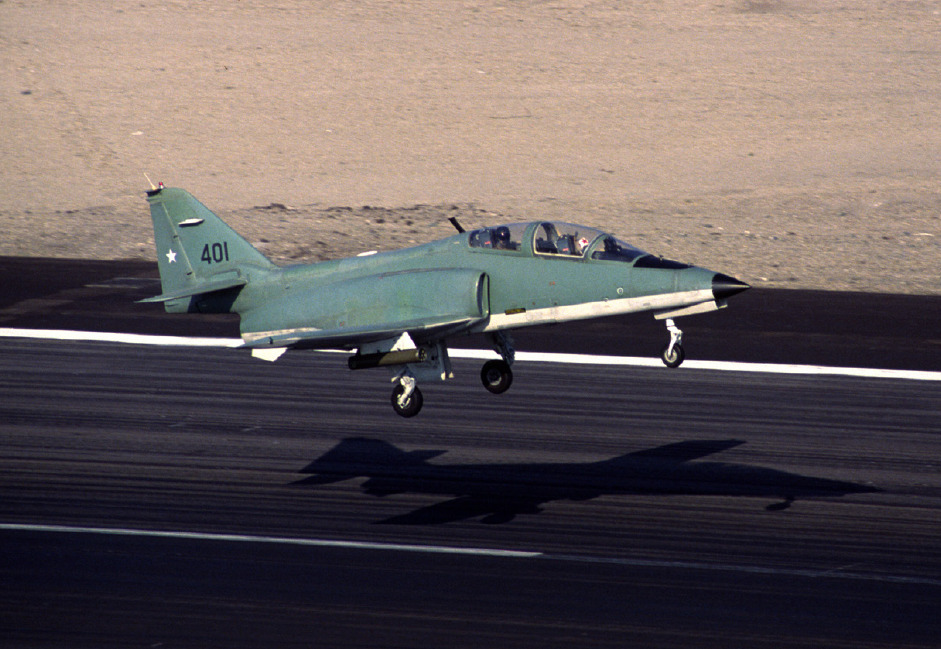
Sources:
- Pucará magazine number 17
- Мировая авиация - Военные самолеты by DeAGOSTINI
- Jane’s air launched weapons 2003
- La Fuerza Aérea de Chile desactiva al avión de combate A-36 Toqui
- T-36 Halcón / A-36 Halcon
- Del Vampire al Viper Recargado...!: Historia de los Jets de Combate de la Fuerza Aérea de Chile (Aviation Art & History - Chilean Air Force) (Spanish Edition): Arróspide, Julio, Zamora, Raúl, Marambio, Cristián: 9798478360191: Amazon.com: Books
- Adiós al T-A 36 Halcón en la Fuerza Aérea de Chile - Noticias Defensa defensa.com Chile





